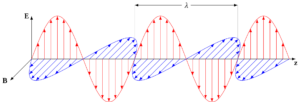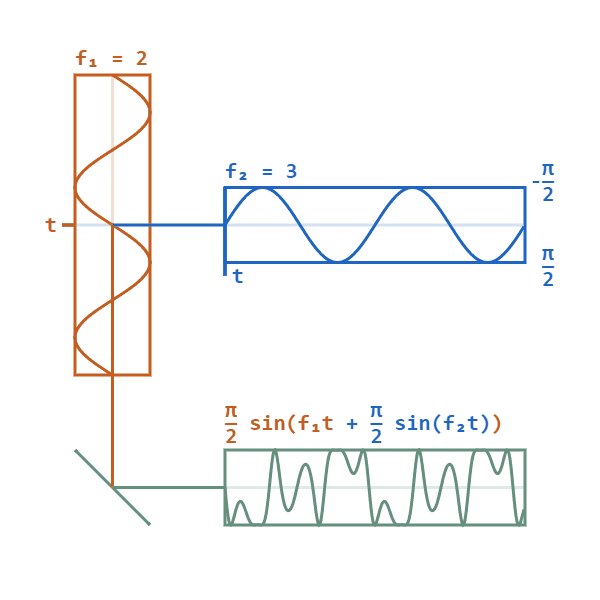Modulation and polarization multiply data capacity on optical networks.
In the beginning of optical networks, all optical signals were based on a simple mechanism known as on-off keying (OOK). In simple terms, this mechanism works by switching a light on and off to transmit data. OOK is a wider definition for representing whether data is present or absent. This mechanism is often used in combination with non-return to zero or return to zero codes.
OOK has,however, almost reached its frequency limit, resulting in the necessity to find new methods to send more data without laying more fiber strands. This is where coherent optics shines. Unlike other devices that increase data frequency, such as PAM4, coherent optics are equipped with digital signal processing (DSP) chips as well as electronic dispersion compensation (EDC). The use of DSP chips and EDC allows for coherent optics to transmit data over 1000 km, depending on the modulation.
What is coherent optics?
Coherent optics can solve capacity issues by modulating amplitude, frequency, and polarization, allowing more information to travel on the same fiber.
To make things easier, imagine a sea wave through which information can be sent. In OOK-based communications systems, we could only decide whether the wave was visible or not. Let’s assume the amplitude refers to the wave’s height, and that we manage to manipulate it. If we could distinguish four different heights, we could send much more information within the same time frame.
Similarly, imagine that frequency refers to when the crest of a wave reaches the shore, and that this is at an interval of 60 sec. By modifying this parameter and having crests reach the shore more frequently, we could send much more data. (Figure 1)

Figure 2. Dual polarization doubles the data rate by transmitting modulated light in vertical and horizontal planes through a fiber.
Now, imagine that the same wave could undulate not just vertically, but also horizontally, and that the two movements could be combined — you would be able to carry twice as much information. (Figure 2) This is what happens when we complicate the transmission using amplitude modulation, phase modulation and by modifying polarization.
Combining these three techniques simultaneously complicates the signal and achieves very high throughput. For example, 400G QSFP-DD optics that is modulated using 16QAM and 64Gbaud has the capacity for 64 billion light changes per second.
DWDM technology
With coherent optics comes various new technologies, including WDM technology multiplies the capacity of a single fiber by using many wavelengths transmitted on one fiber. DWDM multiplexes many signals with different wavelengths into a single fiber. DWDM varies from the original WDM technology as it comes in two types — fixed grid and flex grid. The fixed grid has the capacity for 48 channels with 100 GHz spacing, 64 channels with 75 GHz spacing, or 96 channels with 50 GHz spacing. Flex grid DWDM, on the other hand, does not have any channel numbers as spacing is dynamic, allowing each channel to have a different passband.
WDM technology is not new, but its application to coherent transmission is new. Currently, only DWDM can support both OOK and coherent transmission. This and the technology’s capacity to be amplified, making it largely universal, is likely why it is the most popular WDM technology.
QSFP-DD for increased capacity
A quad small form factor pluggable double density (QSFP-DD) interface differs from previous standards as it is longer than QSFP+ and QSFP28 because it has additional rows of PINs. (Figure 3) This means that instead of the previous four data paths, the QSFP-DD has eight, with each path having a throughput of 56 Gb/sec, meaning a combined total of 400G for a single transceiver. This massively increases the amount of information the interface can handle.
QSFP-DD technology differs from predecessors in that it has over double the maximum power consumption of the QSFP28. That allows for enough energy to operate coherent DSP. This is useful as network planners can skip using transponders or muxponders for their DWDM network. This technology can save companies up to 50% in initial investments and up to 90% in power consumption.
 Marcin Bała is the CEO of telecommunication networks specialist Salumanus and of equipment manufacturer GBC Photonics. He has played a key role in Salumanus’ success for over 14 years, on technical, structural and managerial levels. His expertise ranges from CWDM and DWDM systems to coherent optics and alien wavelength. Marcin is actively looking for challenges and finding the best solutions for his customers, being sometimes referred to as a “DWDM Technology Evangelist”.
Marcin Bała is the CEO of telecommunication networks specialist Salumanus and of equipment manufacturer GBC Photonics. He has played a key role in Salumanus’ success for over 14 years, on technical, structural and managerial levels. His expertise ranges from CWDM and DWDM systems to coherent optics and alien wavelength. Marcin is actively looking for challenges and finding the best solutions for his customers, being sometimes referred to as a “DWDM Technology Evangelist”.







Tell Us What You Think!